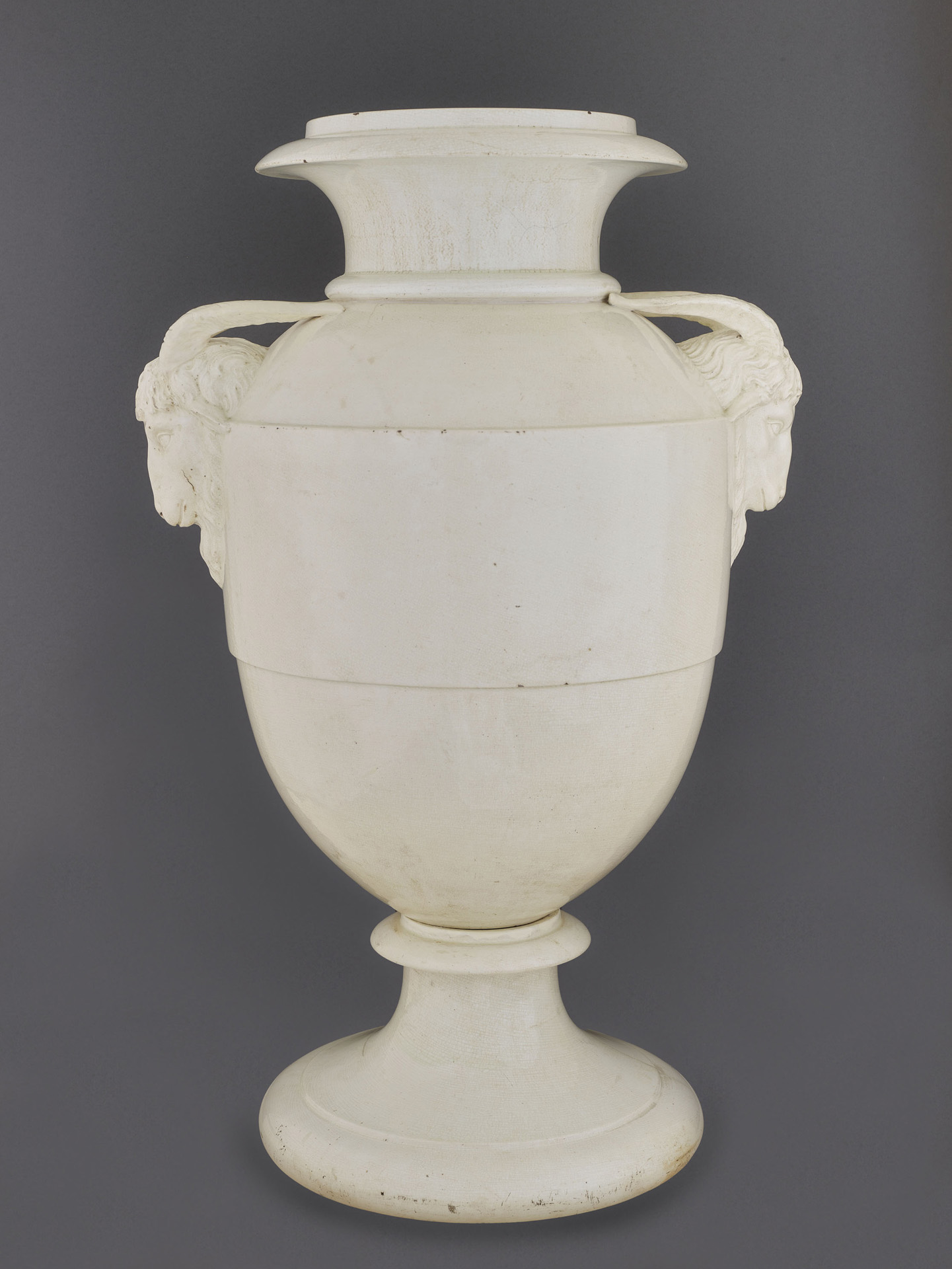
Manufactura de Alcora
Ornamental vase
Late 18th-early 19th century
WORK INFORMATION
Ceramic, pipe clay, height: 84 cm
The Alcora manufactory was founded in 1727 by the 9th Count of Aranda on land he owned in what is now the province of Castellón. The aim was to create a luxury earthenware and porcelain factory that would compete with foreign manufactories. Royal privileges, including tax exemption on the export of pieces and the free entry of materials from abroad, allowed this manufactory to operate until the middle of the 19th century despite the fact that it barely made any profits.
Throughout its existence, the factory became a model of organisation and a point of reference in terms of aesthetics thanks to the recruitment of foreign specialists, artists and “secretists” who claimed to know the secret of porcelain manufacture. In addition, the creation of an apprentice academy enabled the manufactory to continue to provide top quality production.
Chronologically, this vase was produced between the second and third periods of the Alcora manufactory. In 1774, a new manager was hired for the establishment’s porcelain department: François Martin, who held the post until his death in 1786. Under his direction, this section of the factory grew considerably. In addition to porcelain, Martin’s workshops began to produce pieces made of pipe clay, a paste of English origin characterised by its creamy colour, lightness and low cost. All the European manufactories were forced to make pieces with this paste in order to compete with the low prices and quality of the English products. However, at Alcora it was very expensive to manufacture with pipe clay because the materials had to be imported and the firings were often unsuccessful. To solve this problem, the staff at Alcora made pieces with the same moulds and then decorated them with a creamy glaze that sought to achieve the same effect as pipe clay.
During the last decades of the 18th century, when the third period of Alcora manufacture began, there was a slight change in the artistic orientation of the factory. This change came about as a result of the hiring in 1787 of Pierre Cloostermans (1752-1798), a French chemist who had worked as a painter in the porcelain manufactories of Sèvres and Limoges. He was in charge of the porcelain department at the Castellón factory, and his work can be valued very highly, as in addition to improving the porcelain and pipe clay recipes, he introduced the neoclassical style to Alcora.
This elegant example, an ovoid vase with a goblet foot and lateral wings shaped like rams, shows that the Alcora factory followed the trends in France, where sober, weighted designs and ornamentation were just then in vogue.

